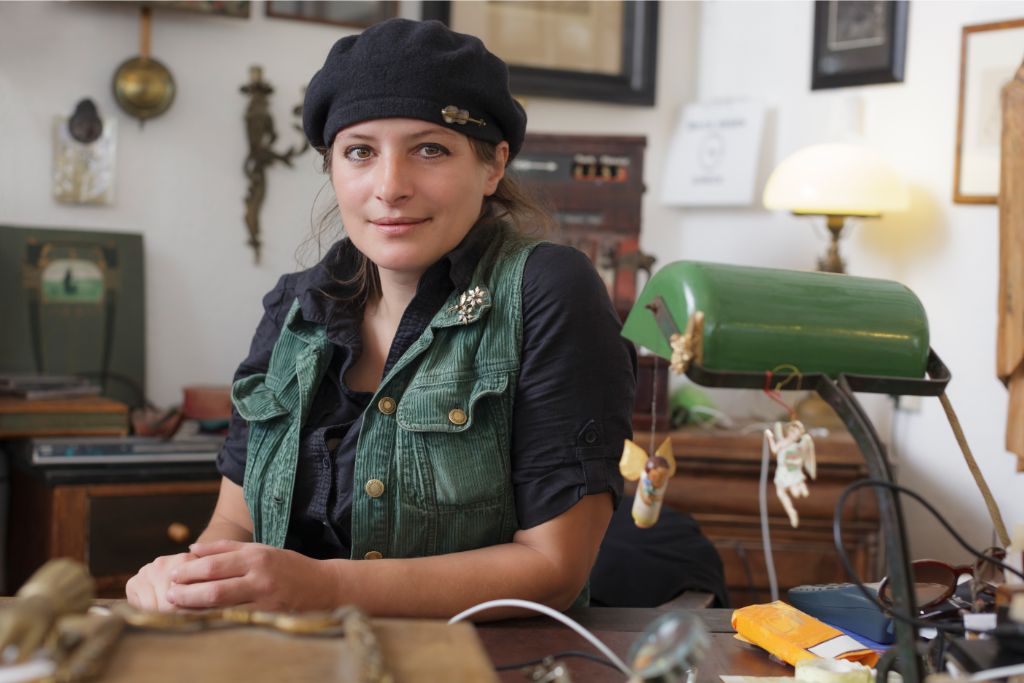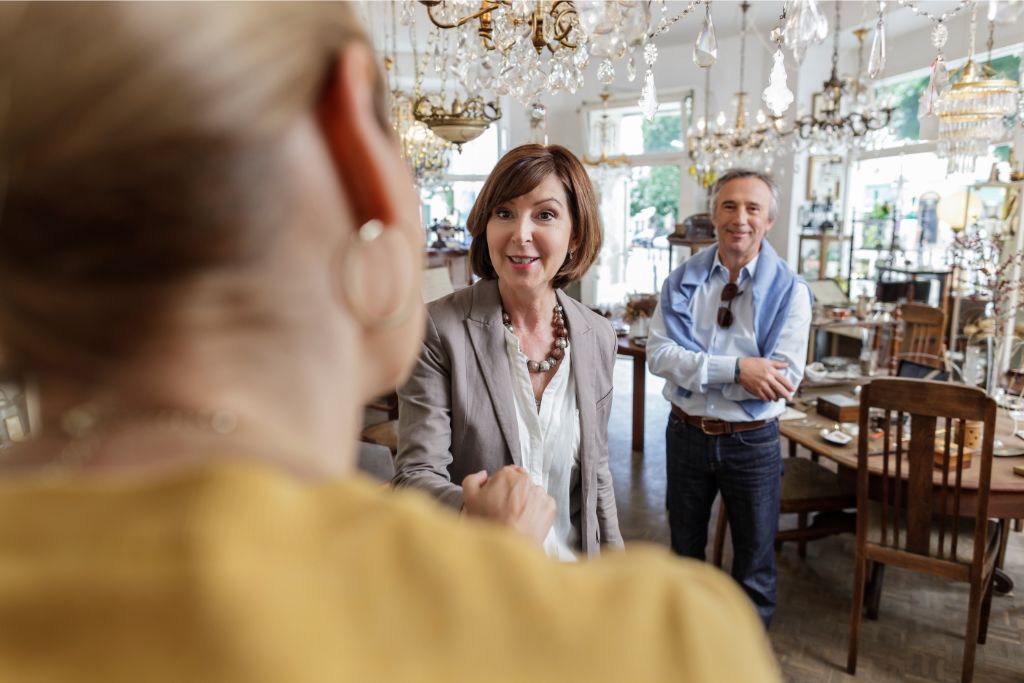Social Media Marketing Techniques For Antique Stores

You’re a keeper of history with your antique store. But, is your marketing in the present? You have gems to flaunt.
Social media is the ideal treasure map for customers. Let’s explore! We’ll decode your audience, pick the best platforms, craft captivating content, and more.
Ready to shift your business from old-fashioned to cutting-edge? Let’s open those digital gateways together!
Table of Contents
- 1 Understanding Your Audience
- 2 Choosing the Right Platforms
- 3 Creating Engaging Content
- 4 Leveraging Hashtags Effectively
- 5 Interacting with Your Audience
- 6 Running Social Media Contests and Giveaways
- 7 Utilizing Paid Social Advertising
- 8 Monitoring and Adjusting Your Strategy
- 9 BONUS
- 10 Frequently Asked Questions
- 10.1 How can I find antique items that are highly in demand on social media?
- 10.2 What precautions should I take while sharing images of antique items to prevent counterfeiting?
- 10.3 How can I effectively manage negative comments or reviews on my social media posts?
- 10.4 Is there any specific time or day of the week most effective for posting on social media for antique stores?
- 10.5 How can I collaborate with influencers or bloggers interested in antiques to boost my social media presence?
Understanding Your Audience
You must clearly understand who your audience is when planning your social media marketing strategies for an antique store. You’re not just selling items. You’re selling history and nostalgia – the story behind each piece.
Your target demographic isn’t likely to be the typical fast-fashion or tech-savvy consumer; instead, they’ll appreciate the charm and character of old-world goods.
To get this right, employ audience analytics tools on platforms like Facebook or Instagram. This lets you track behaviour patterns, demographic information, preferences, and interests – key components in crafting a successful strategy.
Demographic targeting is another vital tool. Are most of your followers mature individuals with disposable income? Or are they young professionals seeking unique home decor? Use these insights to adjust your content accordingly. If younger folks form a significant portion of your audience, consider posts showcasing how antiques can blend with modern aesthetics.
Remember, each post should resonate with them emotionally – trigger memories, evoke a sense of wonder, or catapult them back in time visually through high-quality images and engaging stories about the items’ pasts.
Your success lies in knowing who’s on the other side of the screen and what they’re looking for.
Choosing the Right Platforms
As an antique store owner, harnessing the power of social media platforms can be transformative for your business.
Instagram’s visually stunning platform lets you showcase your unique pieces in all their glory, enticing potential customers with a virtual window into your collection.
You’re advertising and engaging with a community of antique lovers and collectors on Facebook.
Pinterest is an evergreen source of inspiration and a perfect place to curate collections that reflect your store’s aesthetic appeal.
Benefits of Instagram for Visual Appeal
You’re missing out if you’re not using Instagram’s visual appeal to showcase your antique store’s unique items. Each post becomes a digital window display, enticing potential customers with the allure of vintage treasures. Experiment with Instagram filters to add depth and character to your pieces; they can accentuate intricate details or highlight the patina that only comes with age.
Influencer partnerships also offer significant benefits. By collaborating with influencers with an aesthetic that matches your inventory, you can reach a wider audience – individuals who appreciate the beauty and history of antiques just as much as you do. You don’t need blockbuster budgets for these collaborations; often, micro-influencers deliver impressive results due to their highly engaged followers.
Using Facebook for Community Engagement
Leveraging Facebook can significantly boost your store’s community engagement, allowing you to interact with customers and fans personally. A clever technique is hosting Facebook live auctions. Not only does this give the visibility of your products, but it also involves your audience directly, building excitement and anticipation.
Additionally, consider sponsored event partnerships. This strategy can amplify reach by tapping into the partner’s followership while reinforcing your brand positioning within the antiques industry.
| Strategy | Benefit |
|---|---|
| Facebook Live Auctions | Direct customer interaction; Increased product visibility |
| Sponsored Event Partnerships | Extended reach; Brand reinforcement |
Remember that success in social media marketing requires understanding your audience’s needs and interests. Tailor content to engage them effectively, and they’ll be more likely to become loyal customers.
Pinterest for Inspiration and Collection
Pinterest isn’t just for DIY projects; it’s a fantastic platform for showcasing your store’s unique collections and inspiring potential customers. With Pinterest Boards Creation, you can categorize different antique styles, periods, or colors to make browsing easier for followers. It’s not about hard selling; create an appealing visual journey through your offerings.
Moreover, Pinterest is also excellent for Antique Trends Spotting. Stay ahead of the curve by following influential pinners in the antique world and noting what often gets pinned. You’ll get insights into what resonates with people and can adjust your inventory accordingly.
Creating Engaging Content
You’ve nailed down your platform strategy, but what’s next?
It’s time to captivate your audience with high-quality photos that truly showcase the charm and history of each antique piece.
Engage them further by weaving compelling stories around your collections, and build trust by sharing testimonials from satisfied customers because nothing speaks louder than a happy customer sharing their experience.
Showcasing Items with High-quality Photos
Don’t underestimate the power of high-quality photos to showcase your antique items on social media. With the proper photo editing techniques, you can make your products pop and grab your audience’s attention. You’re not just selling an item. You’re selling a story, a piece of history.
How do you achieve these stunning visuals? Well, one key factor is lighting for antiques. Proper lighting enhances textures and colors, bringing out the charm and uniqueness of each piece. Use natural light when possible; it’s soft and diffused. Shoot for warm hues during the golden hours – early morning or late afternoon.
Storytelling Around Pieces and Collections
Having mastered presenting your items with stunning photos, it’s time to dive into another essential strategy – telling the compelling ‘Artifacts History Narration and ‘Vintage Collections Chronicles. This is where you connect with your audience on a deeper level by providing the captivating stories behind each piece.
Here’s a simple table that highlights how you can employ storytelling:
| Social Media Platform | Artefact Example | Storytelling Approach |
|---|---|---|
| 1890s Victorian Lamp | Share the history of Victorian design trends and this lamp’s journey from creation to your store. | |
| WWII Medal | Chronicle the heroics of unsung heroes during WWII, fostering a sense of connection and respect for past sacrifices. | |
| Antique Vinyl Record Collection | Tell short snippets about iconic artists whose records are in the collection. |
Sharing Customer Reviews and Testimonials
Now that we’ve covered storytelling, leveraging customer reviews and testimonials is crucial to boosting credibility and trust. You know the power of a satisfied customer’s words, but how you present those words matters as much.
Review authenticity is vital; customers can spot a fake from miles away. Make sure your testimonials are genuine and verifiable.
Testimonial presentations on social media platforms should be visually appealing yet straightforward. Don’t overload with excessive embellishments or graphics that distract from the message. Use high-quality pictures of the antiques discussed in the reviews for impact.
Antique stores must use hashtags strategically in their social media marketing to increase visibility and attract potential customers. With proper hashtag analysis, you can identify the trending hashtags that resonate with your target audience and incorporate them into your posts.
Here are three key steps you should follow:
- Research: Start by identifying popular hashtags within your niche. Look at what other successful antique stores or related industries are using. Tools like Hashtagify can help with this.
- Analyze: Next, do a deep dive into these hashtags’ performance. Are they attracting engagement? Are they reaching the right demographic? You can utilize social media analytic tools for this step.
- Implement: Finally, start using these trending hashtags subtly in your posts without overdoing it – balance is essential here.
Interacting with Your Audience
You’ve got to remember that engaging with your followers can significantly boost your online presence. In the antiques and retail industry, this interaction becomes even more crucial. It forms a bridge between you and your customers, fostering trust and loyalty.
Audience feedback is an invaluable tool in this scenario. Use it to understand what catches their eye among your antique collections or how they perceive your store’s ambiance. You’re not just showing off beautiful vintage products; you’re creating an experience for them that resonates personally.
Try live broadcasting occasionally – maybe unveil new arrivals or conduct virtual tours of your store. This gives a real-time feel to engagements and opens up avenues for instant communication.
However, remember that it’s not all about selling items directly through these broadcasts – use them as opportunities for storytelling instead. Share tales about the history of pieces, where they come from, or any exciting restoration work done on them.
Running Social Media Contests and Giveaways
Running contests and giveaways on your platforms can also enhance your audience’s engagement levels. These engaging, interactive strategies lure in consumers who appreciate the value of antiques. It’s crucial to develop a comprehensive contest promotion strategy to ensure success.
Firstly, identify the prize – it could be a sought-after antique piece that resonates with your audience. Next, set clear contest rules, such as sharing the post or tagging friends, further enhancing your shop’s visibility. Use eye-catching graphics and compelling captions to promote these events across all social media platforms. Regular updates will keep the contest in your followers’ minds.
Now, let’s discuss giveaway partnership opportunities within the antique retail sector. Partnering with other businesses helps you tap into their customer base, too! You could collaborate with home decor brands or auction houses, increasing exposure for both parties.
Utilizing Paid Social Advertising
While running contests and giveaways can significantly boost your antique store’s online presence, investing in paid social advertising is equally crucial. It’s time to elevate your game by incorporating savvy ad-targeting strategies and budget optimization tips.
Your antique collection is unique, steeped in history, just like the audience it attracts. Ad targeting strategies allow you to zero in on that demographic who cherishes yesteryear’s charm. Platforms like Facebook and Instagram offer robust targeting options where you can select audiences based on their interests or behaviors. You might target individuals interested in antiques, home décor, or history. So remember, be precise with your targeting; every click counts!
Budget optimization is another key aspect. Don’t let high costs scare you away from paid advertising; learn how to optimize it! Set a realistic budget considering campaign duration, expected reach, and necessary adjustments over time. Prioritize ads that perform well – this could mean focusing more on posts featuring Victorian jewelry than vintage typewriters if they resonate more with your audience.
Smart investments backed by sharp strategies will ensure your antique treasures find their rightful owners through social media platforms.
Monitoring and Adjusting Your Strategy
It’s essential to closely monitor your strategies, adjusting them based on performance and feedback. As an antique store owner, you often have a unique inventory requiring a tailored social media marketing approach. You should be familiar with strategy evaluation and understand how to decipher performance metrics.
Monitor the engagement of your posts regularly. If specific posts about Victorian-era furniture receive more likes and shares, it might be worth dedicating more of your content to this era or style. Similarly, if your followers aren’t responding to posts about collectible coins but love vintage jewelry, there’s no shame in pivoting your strategy.
Consider utilizing tools like Google Analytics or Facebook Insights to dive deeper into performance metrics. They’ll provide robust data regarding who’s engaging with you and when – invaluable information for fine-tuning strategies.
Remember that social media is an ever-evolving landscape. What works today may not work tomorrow. Continually evaluate your methods, make changes where necessary, and never stop learning about trends within both antiques and digital marketing spheres.
Don’t just set and forget; remember – monitoring and adjusting are key to success in social media!
BONUS
Maximize your antique store’s social media impact with OnlySocial’s essential Post Planning and Scheduling function. Seamlessly plan and schedule your posts across all social networks, ensuring consistent and strategic content delivery. With unlimited posting and the ability to manage unlimited social profiles, you can expand your online presence without limitations. Don’t miss out on optimizing your social media strategy. Sign up for a commitment-free 7-day trial today.
Frequently Asked Questions
Keep an eye on trending hashtags and popular posts on social media. This way, you’ll discover which antique items are in high demand. Also, pay attention to your target audience’s preferences. You can then price these antiques competitively, attracting more potential buyers and boosting sales.
What precautions should I take while sharing images of antique items to prevent counterfeiting?
Make sure to add a watermark on your images. This will discourage counterfeiting. Be aware of copyright matters. It’s best not to share items if ownership isn’t clear. Opt for unique, hard-to-copy image features. This helps safeguard your antiques’ originality on social media.
Tackle those negative comments with ease. Stay calm, and show understanding. Offer solutions. Use reputation management tactics. Be transparent and professional. Turn criticism into helpful feedback. Enhance your antique store’s performance.
There’s no universal ‘best time’ for posts. It’s all about when your audience is online. Yet, research hints that weekdays, during working hours, often work well for antique store posts.
Begin by pinpointing those influencers and bloggers with a love for antiques. Build relationships with these influencers and engage them in collaborations. Offer them rare antique items for reviews or even giveaways. Trust me. This strategy can skyrocket your social media presence.




